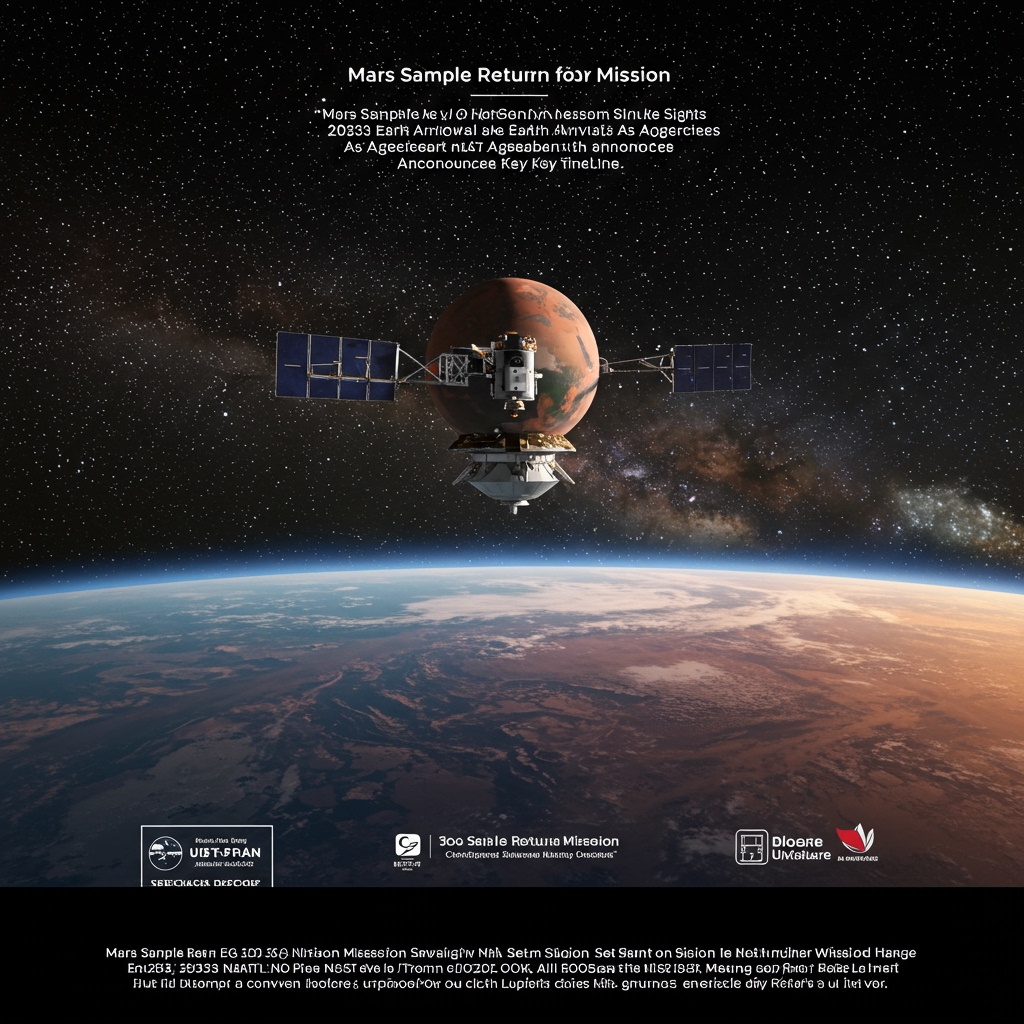Historic Timeline Set for Mars Sample Return
The international endeavor to bring Martian samples back to Earth has reached a significant milestone. A consortium of leading space agencies, including the National Aeronautics and Space Administration (NASA), the European Space Agency (ESA), and the Japan Aerospace Exploration Agency (JAXA), today unveiled a refined schedule for their joint Mars Sample Return mission. This updated timeline provides concrete target dates for the launch of key mission components, setting the stage for the anticipated arrival of precious Martian material on our home planet in the next decade.
The mission, known as Mars Sample Return (MSR), is widely regarded as one of the most ambitious and complex undertakings in the history of planetary exploration. Its primary objective is to retrieve carefully selected geological samples from the surface of Mars and transport them back to Earth for in-depth analysis. Such analysis, utilizing instruments and techniques far more sophisticated than can currently be sent to Mars, is expected to yield unprecedented insights into the red planet’s past environment, its geological evolution, and critically, its potential to have hosted life.
Key Mission Components and Launch Windows
The refined schedule announced by the participating agencies outlines specific target launch years for the primary spacecraft tasked with the sample retrieval and return phases. The plan now targets the launch of the Sample Fetch Rover (SFR) in the year 2029. The SFR is a critical element of the mission, designed to locate and collect the sample tubes that have been strategically deposited on the Martian surface by another robotic explorer.
Following the launch of the Sample Fetch Rover, the mission architecture calls for the deployment of the Earth Return Orbiter (ERO). The updated timeline specifies a target launch window for the ERO in 2030. This powerful spacecraft will journey to Mars, enter orbit around the planet, and serve as the crucial link for the return journey.
Perseverance Rover’s Pivotal Role
The foundation for the Mars Sample Return mission’s success is already being laid by NASA‘s Perseverance rover. Since its arrival on Mars in 2020, the Perseverance rover has been diligently exploring the Jezero Crater region, a site believed to have once hosted a lake and river delta system. Using its advanced drilling capabilities, Perseverance has been collecting scientifically compelling rock and regolith samples and sealing them in robust titanium tubes.
These tubes represent the invaluable cargo that the MSR mission is designed to retrieve. Perseverance has been depositing these tubes at designated locations on the Martian surface, creating caches of samples ready for future collection. The samples selected by the rover cover a diverse range of geological features, providing a window into different eras of Martian history and environmental conditions. The ongoing work of Perseverance is therefore directly enabling the future phases of the Sample Fetch Rover and Earth Return Orbiter.
The Complex Journey Back to Earth
The intricate process of bringing samples from the surface of Mars back to laboratories on Earth involves several distinct phases and spacecraft. It begins with the foundational work performed by NASA‘s Perseverance rover, which has been collecting and caching samples since 2020. The first step in the retrieval process outlined in the refined timeline involves the launch of the Sample Fetch Rover (SFR) in 2029. This rover will be responsible for collecting the sample tubes left behind by Perseverance on the Martian surface.
Following the collection by the SFR, the samples must be transported from the surface into orbit around Mars. The Earth Return Orbiter (ERO), targeted for launch in 2030, will then play its crucial role. The ERO is designed to rendezvous with and capture the container holding the Martian samples once it is successfully delivered into Mars orbit.
After securing the samples, the Earth Return Orbiter will begin its long journey back towards Earth. This complex series of maneuvers, orbital mechanics, and interplanetary travel is orchestrated to ensure the safe return of the valuable cargo. The culmination of this ambitious mission is the expected arrival of the Martian samples back on Earth, currently targeted for around the year 2033.
Significance for Planetary Science
The Mars Sample Return mission is not merely a logistical challenge; it is considered a critical step in the field of planetary science. The ability to bring samples from Mars back to Earth will allow scientists worldwide to conduct analyses using the most advanced instruments available, many of which are too large or complex to send to Mars. These analyses are expected to unlock profound secrets about Mars.
Specifically, the mission aims to investigate the geological history of Mars with unprecedented detail. By studying the mineralogy, geochemistry, and isotopic composition of the returned samples, scientists hope to better understand how the planet formed, evolved over billions of years, and why it differs so dramatically from Earth.
Furthermore, a key scientific driver for the mission is the search for evidence of past life on Mars. The samples collected by the Perseverance rover from Jezero Crater are specifically chosen from environments that were potentially habitable in the ancient past. Analysis of these samples on Earth could reveal fossilized biosignatures or other compelling evidence that Mars once harbored microbial life.
The successful return and analysis of these samples around 2033 would represent a landmark achievement, fundamentally advancing our understanding of Mars and the potential for life beyond Earth. The refined timeline announced today provides a clearer roadmap for this historic mission, highlighting the continued commitment of NASA, ESA, and JAXA to this challenging but scientifically invaluable endeavor.





